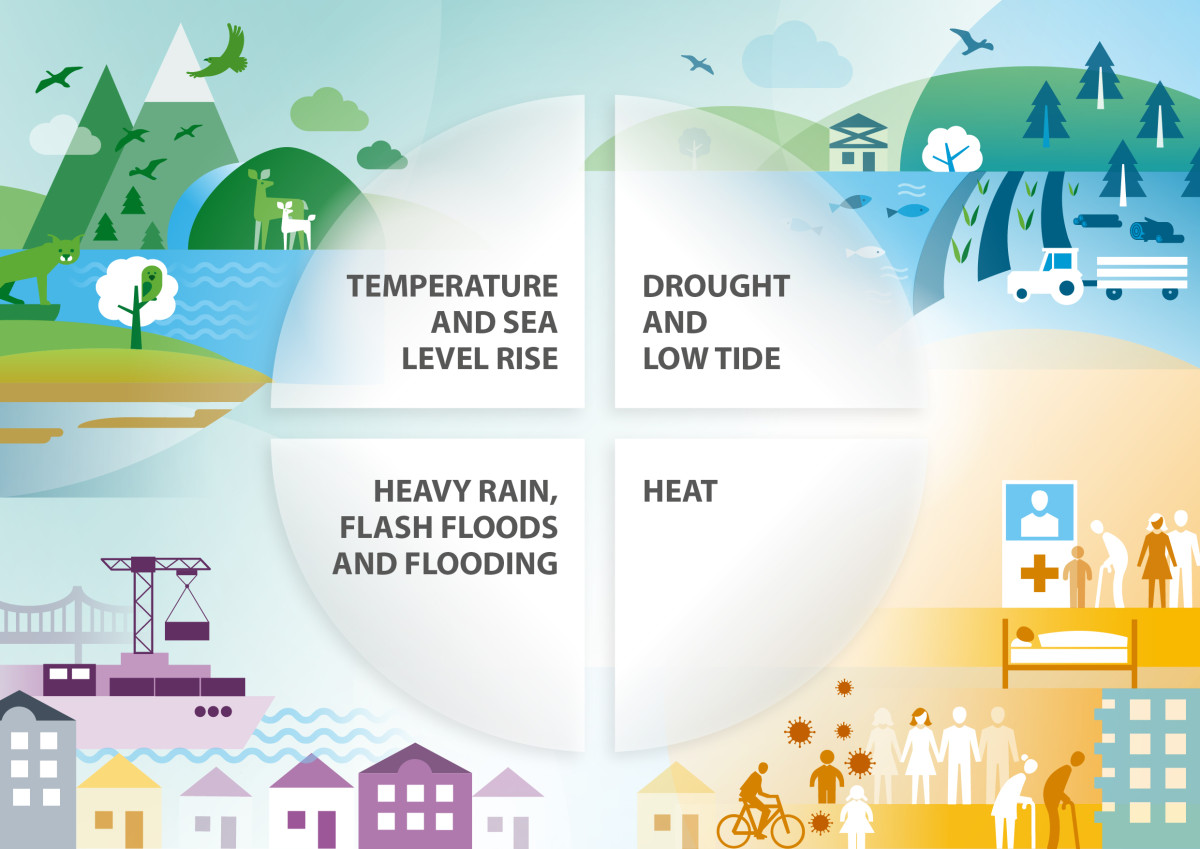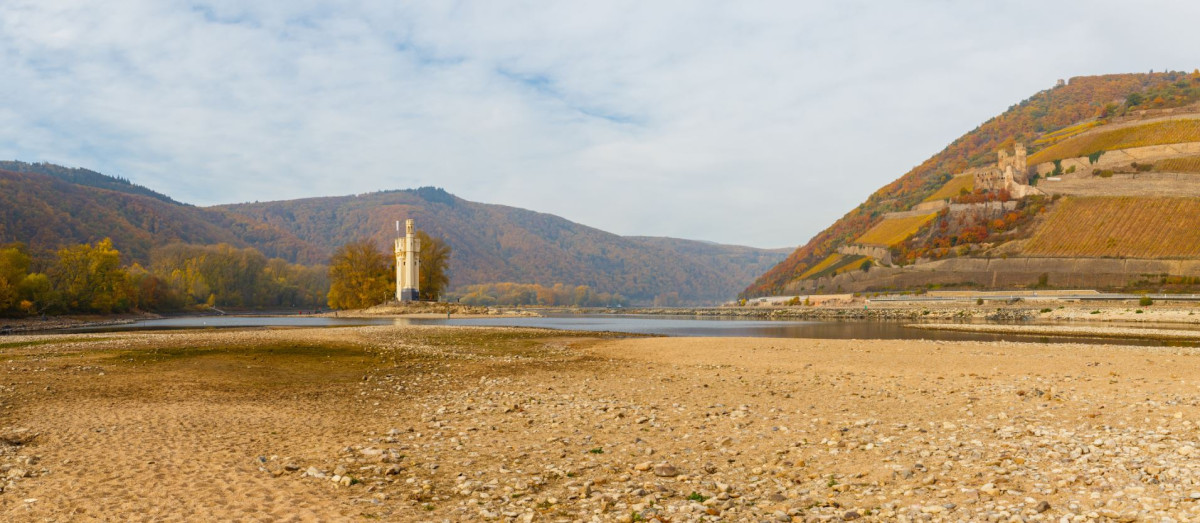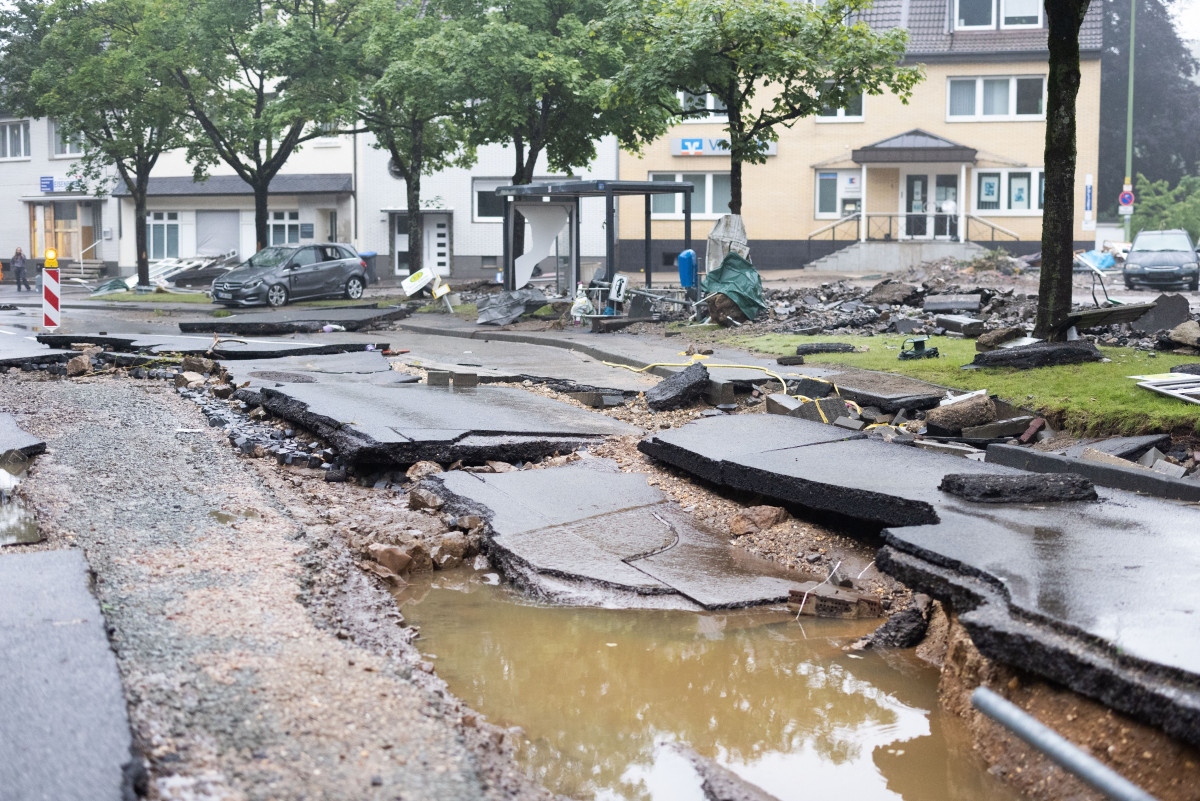Germany still struggling to truly mainstream climate adaptation
***Please note: This article is part of a stocktake of climate adaptation efforts in Europe, which you can find here. Also read the main article Extreme weather forces unprepared Europe to focus on climate adaptation, the Q&A - Why Europe needs to adapt to the impacts of climate change, as well as the factsheet Europe steps up climate change adaptation in wake of floods and heatwaves.***
Deadly floods ring alarm bells
For many years, Germany has experienced the effects of climate change in the form of worsening heat waves, droughts, and mild winters. But the alarm bells only started ringing in earnest when floods killed almost 200 people in the country’s worst natural disaster in half a century in July 2021, a catastrophe widely attributed to rising temperatures.
It began to dawn on both the general public and policymakers that preparing for the unavoidable consequences of climate change is as important as cutting emissions, as Germany is also seeing more frequent heat strokes, allergies, failed harvests, transport disruptions, forest fires, and low water levels in rivers and lakes.
The country has had adaptation strategies and action plans in place for over a decade, but measures have remained mostly voluntary. That is about to change with the government introducing a framework to set binding rules for climate adaptation efforts at national and state level.
However, more needs to be done, according to experts such as Christian Kind, programme head of climate adaptation at independent think tank adelphi. “We need to take adaptation from a topic that we recognise is important, but we don’t prioritise, to something we integrate in decision-making at all levels,” Kind said.
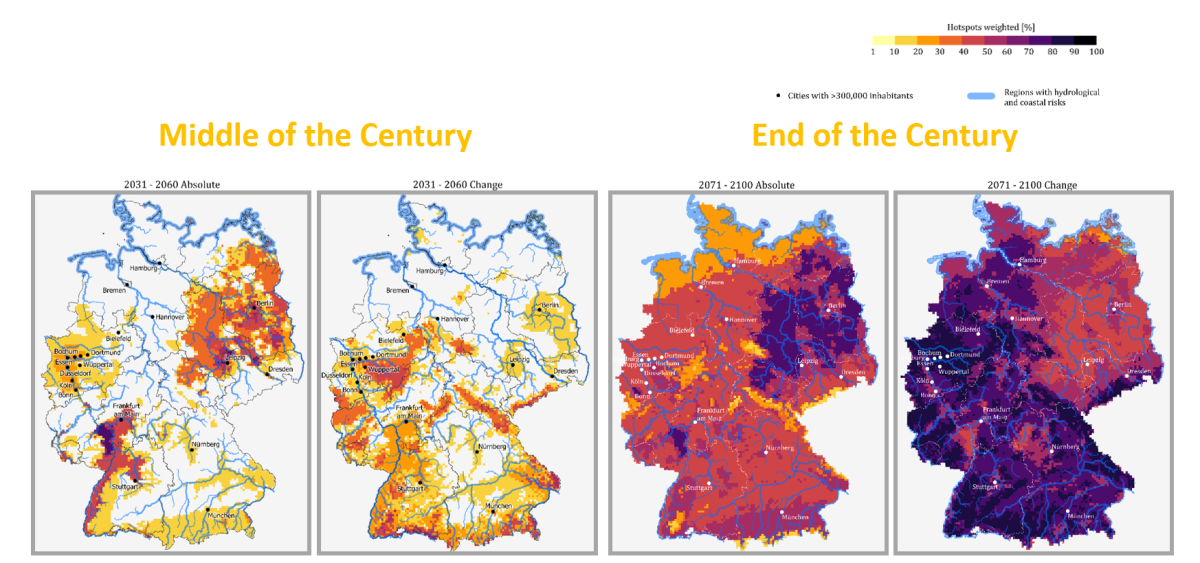
When deciding where to spend money on adaptation measures, the areas society values most demand the greatest attention and resources, Kind said. This includes human health in the short term — protecting lives and preventing the dangerous impacts of extreme weather events — but also the wellbeing of future generations in the long-term, which involves resilient urban planning, biodiversity protection and forest management.
“Because we have a limited budget, there needs to be a discussion about the risks we want to accept as a society and the ones we don’t,” Kind said. “It’s an important discussion because there will never be 100 percent protection, and getting to 99 percent would be very costly.”
The cost of inaction
Depending on the severity of global heating, the consequences of climate change could cost Germany up to 900 billion euros by 2050, according to an environment ministry report. “Without effective climate adaptation, the costs will be much higher,” said state secretary Christiane Rohleder presenting the report, adding that “not acting is more expensive than acting.”
Dealing with the effects of extreme weather events caused by climate change has already cost Germany at least 80 billion euros since 2018, according to a 2022 report commissioned by the economy and climate action ministry (BMWK). On average, extreme heat, drought, and floods have cost the country at least 6.6 billion euros per year in damages over the past two decades. “The numbers sound the alarm for more prevention when it comes to the climate,” environment minister Steffi Lemke said at the time.
In 2022 alone, repeated and long heat waves led to excess mortality of around 4,500 people, according to estimates by the Robert Koch Institute (RKI). Moreover, almost 4,300 hectares of forest burned, a record area – in some cases near inhabited areas. Water levels on the river Rhine ran so low that ships could only pass with a fraction of their usual cargo, hampering the supply of coal and oil.
“The consequences of climate change are no longer an abstract statistical parameter but are increasingly burdening Germany's secure supply of energy and water,” said Andreas Becker, head of the climate monitoring department of the German Meteorological Service (DWD).
Germany’s most comprehensive analysis of the risks and effects of climate change to date, published in 2021 by the Federal Environment Agency (UBA), found that the effects of climate change already permeate all aspects of society and nature in an interlinking web of cascading impacts illustrated in the following graph.
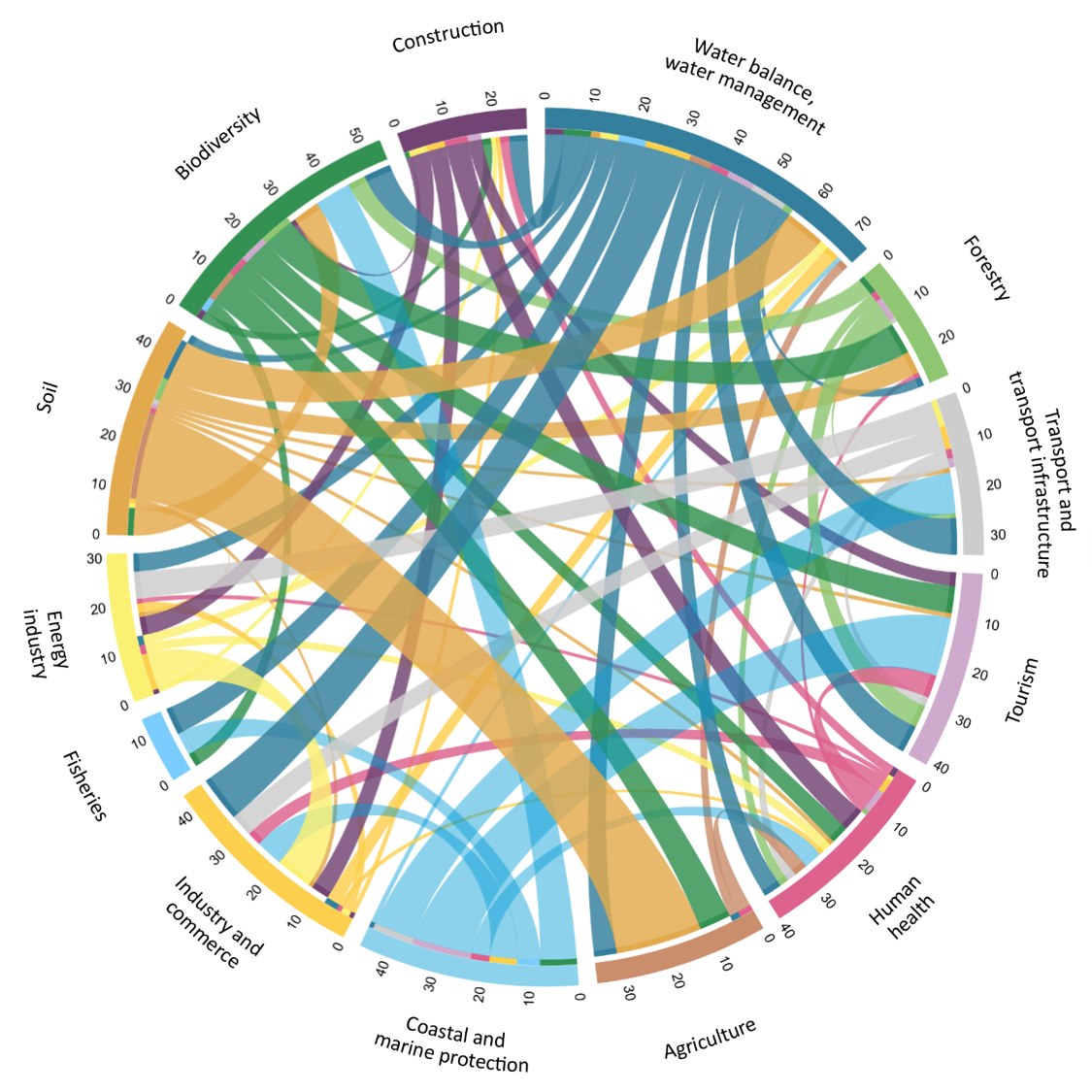
The report also highlighted regional and temporal differences: The east and south-west of Germany will see more extreme weather events, while mean temperatures will rise most strongly in the south and west of the country, as well as in mountainous regions, the authors expect.
Focusing climate protection and adaptation measures to protect natural resources is critical to prevent negative impacts on human health and the economy, they conclude.
Spending priorities
When it comes to financing adaptation, it’s hard to put a number on how much money is available, as there are direct adaptation measures amongst other policies relevant for adaptation. Insulating buildings, for example, both reduces energy consumption and better protects citizens against the heat of summer.
As many adaptation measures are not very tangible, it can be difficult to justify funding for them. To change this perception, it is important to keep the public interested in the effects of climate change beyond individual extreme weather events, Kind says.
Cities and municipalities, for example, need to rebuild sewage systems, re-plan urban spaces so they can better absorb rainwater and digitally monitor water levels. “This will cost a lot of money,” said Green Party politician Annalena Baerbock, who has since become foreign minister. "But if we keep with the status quo instead of investing now, it will eventually become unaffordably expensive and create an incredible amount of suffering."
As a rule of thumb, the private sector should also take into account the risks of climate change throughout their decision-making processes. Climate adaption tends to only get discussed when things go wrong, like recent low water levels in the Rhine River, which have disrupted supply chains and forced companies to find alternative solutions.
In rural areas, the potential for adaptation is huge. However, there are often a lot of small players over large areas trying to implement measures such as the renaturation of rivers to prevent flooding, so communication and team work are essential. Additionally, it is often hard to reconcile the economic pressure to use land for agriculture with leaving land fallow for climate protection.
To facilitate much-needed adaptation funding, environmental NGOs have called for reforms to Germany’s Basic Law — the country’s constitution — so that the federal and state governments are obliged to carry out municipal climate protection and climate adaptation tasks and also to finance them.
Adaptation in Germany: government legislation
- 2008, German Adaptation Strategy (Deutsche Anpassungsstrategie an den Klimawandel [DAS]): assesses the risks of climate change and identifies the fields of action, outlining knowledge on anticipated changes and their impact, and highlighting action measures in 15 sectors (including infrastructure, land, civil protection, water, human health and economy). Provides national policy framework for adaptation measures, but implementation has been mostly voluntary. Updated in 2015 and 2020.
- Progress reports: inform action plans, updated every 5 years, last published in 2020.
- 2011, Adaptation Action Plan (Aktionsplan zur deutschen Anpassungsstrategie [APA]): identifies concrete options for action related to the goals set out in the Adaptation Strategy. Updated regularly and published with progress reports.
- 2015, Monitoring report: underpins the impacts of climate change with solid scientific data and provides information on its tangible impacts, as well as providing an overview of adaptation measures already initiated. Updated every four years.
- 2021, Climate impact and risk assessment (KWRA): identifies regions particularly affected by climate change and which impacts they face. Updated every 6 years.
- 2022, Emergency Climate Adaptation Programme: supports municipalities with funding, advice and networking.
- 2023 (expected by summer) Climate Adaptation Act: will set measurable targets in fields such as heat and allergy prevention, health, and water infrastructure and will set guidelines for joint financing for adaptation measures between the federal and state governments. It will include a national water strategy and a national climate action programme. The proposed climate adaptation act does not yet propose measures, but would require the government to present a strategy by September 2025 and update it every four years.
Lighthouse projects lead the way
Germany has already implemented many exemplary adaptation projects. Recently, municipalities along the Bocholter Aa river in western Germany joined forces to be better protected against floods. This initiative forms the basis for the implementation of technical and ecological measures — including citizen education and water retention areas — to help during floods and periods of heavy rainfall across municipalities. The adaptation plan received a federal ‘Blue Compass’ Award 2022, the highest governmental award for climate adaptation projects.
It is not only the public sector that is advancing adaptation measures, the private sector is also getting involved. An enterprise in central Germany’s Hessen also received a Blue Compass award for growing seasonable vegetables where the consumers are, being resource and land-efficient, and constantly adapting their strategy to changing temperatures – also known as integrated and dynamic agricultural planning.
Many actions are more inconspicuous, such as the inter-ministerial working group, which gathers knowledge and coordinates activities and communication between government ministries at a national, state and municipal level. “It’s not a given that ministries talk to each other during policymaking, and it takes a lot of work,” Kind said, adding that such a holistic approach is key for successful climate adaption.
Municipalities and social institutions can find support at the Information Centre for Climate Adaptation (Zentrum KlimaAnpassung), inaugurated in 2021. The advisory centre supports in initiating and implementing adaptation measures in three key ways; by helping to develop knowledge and selecting and using funding; in the training and further education of staff; and in exchange and networking for the implementation of projects.
Mainstreaming adaptation
EU policies will also help to mainstream adaptation, in the private sector for example. Starting this year, companies in the EU will have to carry out climate risk and vulnerability assessments as well as a climate risk analysis under so-called EU Taxonomy rules. These rules — a classification system for ‘environmentally sustainable’ economic activities in the EU — will see more future uptake in adaptation measures, as companies wanting to benefit from this classification will need to identify and implement adaptation solutions to reduce climate risks to their activities.
“We have a good knowledge-base and good decision-making mechanisms and the basic awareness of what needs to be done,” Kind said, but “we need to make adaptation a topic that is more binding and integrate it in everyday decision-making within policy, businesses and society.”
With its upcoming adaptation act, Germany will be one step closer to this.

